Renault Kangoo VS Subaru Forester – Specs, Efficiency & Price Comparison
Which model is the better choice – the Renault Kangoo or the Subaru Forester? We compare performance (130 HP vs 150 HP), boot capacity (950 L vs 509 L), efficiency (20.20 kWh5.20 L vs 8.10 L), and of course, the price (23100 £ vs 32400 £).
Find out now which car fits your needs better!
The Renault Kangoo (High Roof Estate) is powered by a Diesel, Petrol or Electric engine and comes with a Manuel or Automatic transmission. In comparison, the Subaru Forester (SUV) features a Petrol MHEV engine and a Automatic gearbox.
When it comes to boot capacity, the Renault Kangoo offers 950 L, while the Subaru Forester provides 509 L – depending on what matters most to you. If you’re looking for more power, you’ll need to decide whether the 130 HP of the Renault Kangoo or the 150 HP of the Subaru Forester suits your needs better.
There are also differences in efficiency: 20.20 kWh5.20 L vs 8.10 L. In terms of price, the Renault Kangoo starts at 23100 £, while the Subaru Forester is available from 32400 £.
Compare all the key specs now and find out which model fits your lifestyle best!
In a unique comparison between practicality and adventure, the Renault Kangoo showcases its strengths with spacious interior and versatile cargo options, making it an ideal choice for families and small businesses. Meanwhile, the Subaru Forester stands out with its rugged build and all-wheel-drive capabilities, appealing to outdoor enthusiasts who need a reliable vehicle for varied terrains. Ultimately, choosing between the Kangoo's utilitarian design and the Forester's adventurous spirit depends on your lifestyle needs.
Renault Kangoo
The Renault Kangoo high-roof van delivers a practical and versatile solution for both family and commercial use, with its spacious interior and adaptable seating arrangements. Its modern design and user-friendly features provide comfort and convenience, making it an appealing option for those needing a reliable workhorse. Additionally, the efficient engine options ensure a balanced approach to performance, keeping running costs manageable for everyday driving.
details @ Renault
@ Renault
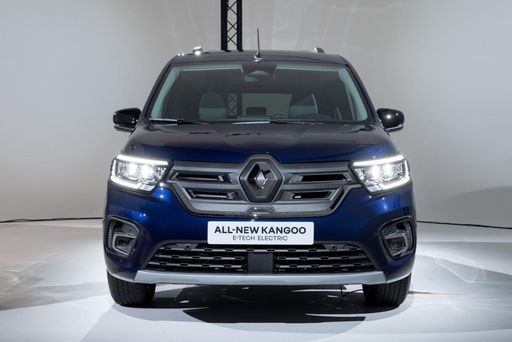 @ Renault
@ Renault
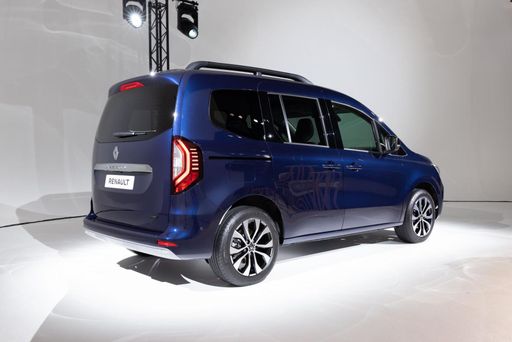 @ Renault
@ Renault
 @ Renault
@ Renault
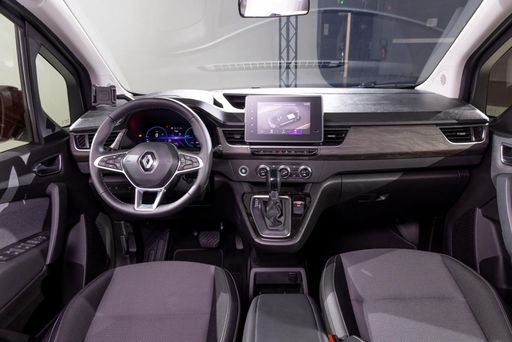 @ Renault
@ Renault
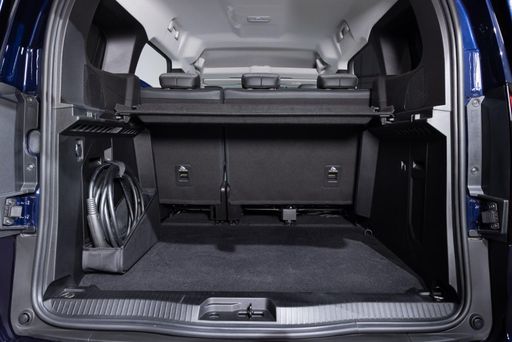 @ Renault
@ Renault
Subaru Forester
The Subaru Forester is a versatile SUV known for its impressive off-road capabilities and practical design. With a spacious interior and advanced safety features, it offers comfort and security for both city driving and outdoor adventures. Its reliable performance and all-wheel-drive system make it a popular choice among those who appreciate a combination of functionality and rugged charm.
details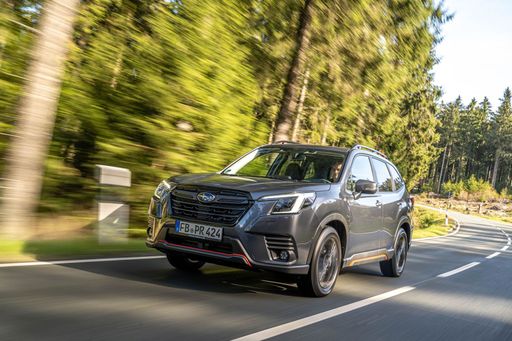 @ Subaru
@ Subaru
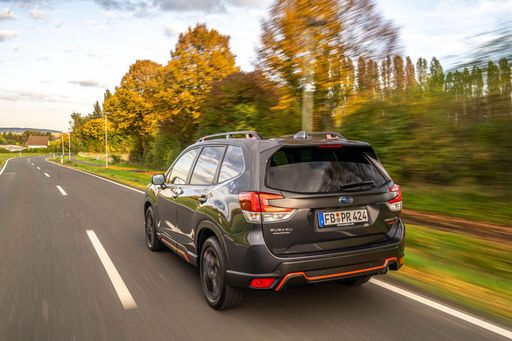 @ Subaru
@ Subaru
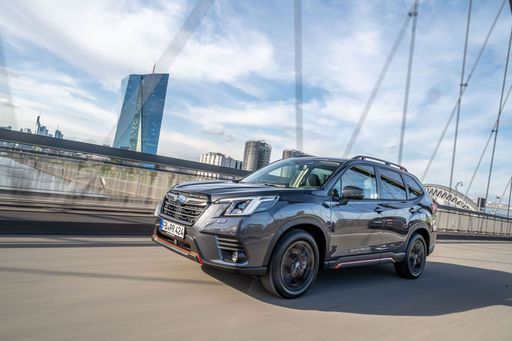 @ Subaru
@ Subaru
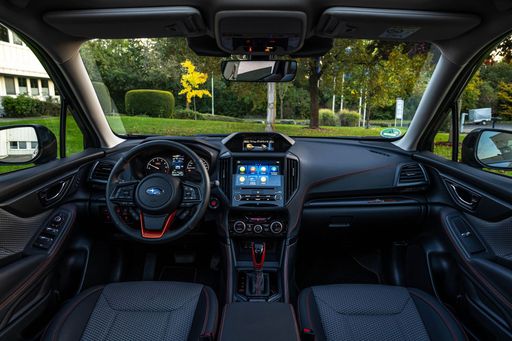 @ Subaru
@ Subaru
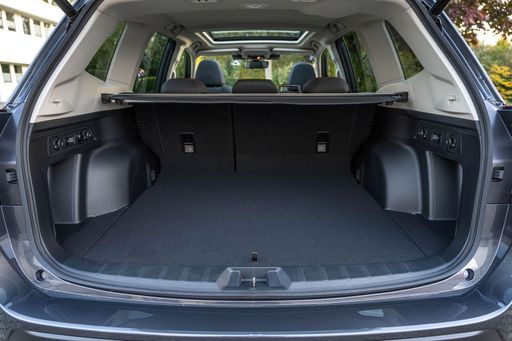 @ Subaru
@ Subaru
When comparing the Renault Kangoo to the Subaru Forester, we delve into two distinct automotive worlds: the practical and spacious Kangoo, designed for urban utility, and the rugged, all-terrain capability of the Subaru Forester. Both vehicles cater to unique audience needs, but they also share a commitment to performance, safety, and innovation.
Body Type and Design
The Renault Kangoo is classified as a High Roof Wagon, which translates to exceptional interior space and versatility. It offers generous trunk capacity, ranging from 500 to 950 liters, making it ideal for families or businesses requiring ample cargo space. The dimensions of 4911 mm in length, 1860 mm in width, and 1869 mm in height underline its robust stature.
On the other hand, the Subaru Forester is a compact SUV. With a length between 4640 mm and 4670 mm, a width of 1815 mm to 1830 mm, and a height of 1730 mm, it boasts a more traditional sporty SUV profile. The Forester’s trunk capacity, while slightly less than the Kangoo at 508-509 liters, still provides decent storage for adventure enthusiasts. The SUV design enhances visibility and adds a rugged appeal.
Engine Variants and Performance
The Renault Kangoo offers a range of engine options, including petrol, diesel, and electric models. Power outputs range from 95 HP to 130 HP, with a torque of up to 270 Nm. Fuel efficiency varies as well, with consumption figures between 5.2 to 7.1 L/100km for petrol and diesel variants. The electric version shines with a consumption of 20.2 kWh/100km and an impressive electric range of up to 285 km.
In contrast, the Subaru Forester is powered by a petrol MHEV engine, delivering 150 HP and 194 Nm of torque. It employs a continuously variable transmission (CVT) to ensure smooth acceleration, with a 0-100 km/h time of approximately 11.8 seconds. The fuel consumption of around 8.1 L/100km, though higher, supports the Forester’s performance on various terrains.
Transmission and Drive Type
The Renault Kangoo supports both manual and automatic transmissions, including a Dual-Clutch Automatic and a Reduction Gearbox, which enhance its versatility for different driving situations. However, it features a Front-Wheel Drive configuration, which is optimal for urban driving.
The Subaru Forester, meanwhile, comes equipped with an All-Wheel Drive system, allowing it to tackle challenging terrains and adverse weather conditions with ease. This feature is essential for outdoor enthusiasts and provides additional peace of mind during trips off the beaten path.
Innovations and Safety Features
Renault has integrated various technological features into the Kangoo, including advanced safety systems and infotainment options. Its spacious interior also allows for family-friendly features, such as ample seating for up to seven passengers in specific configurations.
Subaru is known for its focus on safety, and the Forester comes with a plethora of advanced driver-assistance systems. Innovations include EyeSight technology, which helps prevent collisions and enhances driver awareness. The Forester also boasts high ratings in crash safety, adding to its trusted reputation.
Conclusion: Choosing Your Ideal Vehicle
Ultimately, the choice between the Renault Kangoo and the Subaru Forester depends on lifestyle needs and preferences. The Kangoo excels in spaciousness and utility, making it perfect for families or businesses. Meanwhile, the Subaru Forester appeals to those who enjoy adventure and require a versatile vehicle that handles diverse environments.
Whichever model you choose, both vehicles represent the innovative spirit of their respective brands, blending practicality, performance, and safety to meet modern driving demands.

|

|
|
|
|
Costs and Consumption |
|
|---|---|
|
Price
23100 - 36200 £
|
Price
32400 - 42200 £
|
|
Consumption L/100km
5.2 - 7.1 L
|
Consumption L/100km
8.10 L
|
|
Consumption kWh/100km
20.2 - 21.5 kWh
|
Consumption kWh/100km
-
|
|
Electric Range
278 - 285 km
|
Electric Range
-
|
|
Battery Capacity
-
|
Battery Capacity
0.60 kWh
|
|
co2
0 - 161 g/km
|
co2
183 - 185 g/km
|
|
Fuel tank capacity
54 L
|
Fuel tank capacity
48 L
|
Dimensions and Body |
|
|---|---|
|
Body Type
High Roof Estate
|
Body Type
SUV
|
|
Seats
5 - 7
|
Seats
5
|
|
Doors
5
|
Doors
5
|
|
Curb weight
1585 - 2041 kg
|
Curb weight
1658 - 1739 kg
|
|
Trunk capacity
500 - 950 L
|
Trunk capacity
508 - 509 L
|
|
Length
4486 - 4911 mm
|
Length
4640 - 4670 mm
|
|
Width
1860 - 1919 mm
|
Width
1815 - 1830 mm
|
|
Height
1838 - 1869 mm
|
Height
1730 mm
|
|
Payload
400 - 609 kg
|
Payload
446 - 527 kg
|
Engine and Performance |
|
|---|---|
|
Engine Type
Diesel, Petrol, Electric
|
Engine Type
Petrol MHEV
|
|
Transmission
Manuel, Automatic
|
Transmission
Automatic
|
|
Transmission Detail
Manual Gearbox, Dual-Clutch Automatic, Reduction Gearbox
|
Transmission Detail
CVT
|
|
Drive Type
Front-Wheel Drive
|
Drive Type
All-Wheel Drive
|
|
Power HP
95 - 130 HP
|
Power HP
136 - 150 HP
|
|
Acceleration 0-100km/h
11.6 - 15.6 s
|
Acceleration 0-100km/h
11.8 - 12.2 s
|
|
Max Speed
130 - 184 km/h
|
Max Speed
188 km/h
|
|
Torque
200 - 270 Nm
|
Torque
182 - 194 Nm
|
|
Number of Cylinders
4
|
Number of Cylinders
4
|
|
Power kW
70 - 96 kW
|
Power kW
100 - 110 kW
|
|
Engine capacity
1332 - 1461 cm3
|
Engine capacity
1995 cm3
|
General |
|
|---|---|
|
Model Year
2022 - 2024
|
Model Year
2021 - 2025
|
|
CO2 Efficiency Class
E, F, D, A
|
CO2 Efficiency Class
G
|
|
Brand
Renault
|
Brand
Subaru
|
Renault Kangoo
Introducing the Renault Kangoo: A Versatile Performer
The Renault Kangoo represents a fusion of practicality and innovation, designed to cater to both families and commercial users. With its flexible seating arrangements and a variety of engine options, this model continues to be a stalwart in the high-roof van segment.
Powertrains and Efficiency: Options for Every Driver
The Renault Kangoo offers a wide range of powertrain options to suit diverse needs. Whether you're looking for the fuel efficiency of the diesel engines that range from 95 PS to 115 PS, or the spirited performance of the petrol engines up to 130 PS, the Kangoo provides an option for everyone. The introduction of the E-Tech Electric variant marks a significant step towards sustainable driving with an impressive range of up to 285 km per charge.
Technological Innovations: A Step Ahead
Renault is known for integrating cutting-edge technology, and the Kangoo is no exception. The tech-laden interior is available in various configurations, emphasising comfort and connectivity. The inclusion of advanced driver assistance systems and intelligent power management in the electric models showcases Renault's commitment to innovation.
Economical and Eco-Friendly: In the Details
The Kangoo is engineered with efficiency at its core. The diesel models boast a remarkable fuel consumption as low as 5.2 L/100km, while petrol variants offer a respectable 6.8 to 7.1 L/100km. For the eco-conscious, the zero-emissions electric versions provide an efficient energy consumption between 20.2 to 21.5 kWh/100km, along with a CO2 efficiency class as high as A, making it an attractive choice for those seeking to reduce their carbon footprint.
Space and Versatility: Tailored to Your Needs
Boasting impressive cargo space up to 950 litres, the Kangoo provides unparalleled versatility. Its dimensions, with lengths between 4486 mm and 4911 mm and widths of 1860 mm to 1919 mm, ensure it can comfortably accommodate both passenger seating and ample load capacity. The Kangoo's design ensures you have the flexibility to meet all your transport needs, whether personal or professional.
Design and Comfort: A Sophisticated Ride
The Renault Kangoo has been designed with comfort and convenience in mind. It offers sophisticated design elements, high-quality materials, and options like the high-tech ‘Equilibre’ and ‘Techno’ trims, ensuring every drive is as enjoyable as possible. These trims bring not just style, but a sense of personalized luxury to your daily commute or business endeavours.
Conclusion: The Renault Kangoo at a Glance
The Renault Kangoo stands out as a truly versatile vehicle, blending efficiency, technology, and space in one package. Its range of engine and gearbox options, along with its myriad features, cater to a wide array of needs, making it a top choice in the high-roof van category. Whether you're an eco-conscious driver, a business operator, or a family in need of space, the Kangoo offers a reliable and innovative solution.
Subaru Forester
The Subaru Forester: A Staple of Innovation
The Subaru Forester continues to stand out as a robust and reliable choice in the SUV market. Known for its rugged capabilities and thoughtful design, the Forester combines traditional Subaru strengths with modern technological innovations. As an all-wheel-drive vehicle, it promises safety, efficiency, and performance in a dynamic package.
Engineering and Performance
At the heart of the Subaru Forester lies its 2.0-litre petrol mild-hybrid engine, delivering a stout 150 PS and 194 Nm of torque. This power is channelled through an advanced CVT gearbox, ensuring smooth and responsive acceleration. The vehicle can sprint from 0 to 100 km/h in approximately 11.8 seconds, showing its agility despite its SUV stature.
One of the highlights is its all-wheel-drive system, designed to offer excellent traction and stability across diverse driving conditions. The Forester provides a top speed of 188 km/h, ensuring an exciting drive whether you're navigating city streets or venturing onto the open road.
Technical Specifications
The Forester maintains a balance between practicality and efficiency. With a fuel consumption rate of 8.1 L/100km and CO2 emissions positioned at 185 g/km, this SUV provides an efficient yet powerful performance. The mild-hybrid system is supported by a 0.6 kWh battery, offering enhanced fuel economy and reducing environmental impact.
Weighing between 1658 and 1693 kg, the Forester is designed to offer both robustness and fuel efficiency. It boasts a generous cargo capacity of 509 litres, perfect for both daily use and adventurous getaways. The exterior dimensions—4640 mm in length, 1815 mm in width, and 1730 mm in height—strike a balance between presence and manoeuvrability.
Design and Interior Features
With a sleek and modern design, the Forester is available in several trims catering to different customer preferences, such as the Trend Lineartronic, Active Lineartronic, and the luxurious Edition Exclusive Cross Lineartronic. The interior space is noteworthy, providing comfortable seating for five passengers, making it an excellent option for family journeys.
Safety and convenience are paramount in the Forester, featuring driver assistance systems designed to support and protect. The model comes equipped with state-of-the-art technology to keep occupants entertained and connected, enhancing the driving experience significantly.
Affordability and Running Costs
Price-wise, the Subaru Forester ranges from €37,790 to €46,450, aligning with its features and capabilities. The monthly costs for ownership may vary between €1125 and €1221, with costs per kilometre ranging from 45 to 48.9 cents. For those seeking an SUV that's a combination of comfort, reliability, and reasonable running costs, the Forester presents a persuasive choice.
Conclusion
The Subaru Forester remains a solid contender in the SUV segment, offering a mix of performance, practicality, and modern features. This vehicle is engineered for those who desire a dependable and versatile companion for all their adventures. With its blend of innovative technologies and classic Subaru reliability, the Forester continues to be an attractive option for discerning drivers.
The prices and data displayed are estimates based on German list prices and may vary by country. This information is not legally binding.
